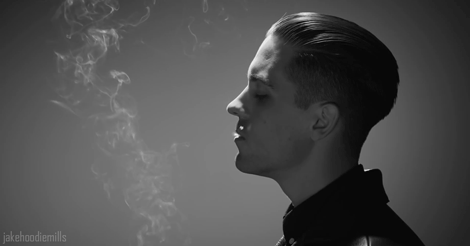"Paul D fished in his vest for a little pouch of tobacco-- concentrating on its contents and a knot of its string while Sethe led Denver into the keeping room that opened off the large room he was sitting in." (pg. 18)
 Back then after the Civil War tobacco became really popular. It was expensive so mostly the rich and slave owners smoked it. Tobacco was farmed at many of the farms who had slaves. In the story tobacco helps articulate the theme of stereotypes. It is assumed that if you were rich and white in the 1870's you would smoke tobacco. Seeing this through the postcolonial lens tobacco was very commonly farmed on slave properties back then. A source said that, "seven-tenths of all persons above the age of twelve years, both male and female, used tobacco in some form." (source) In a flashback about Sixo after traveling thirty miles to meet his significant other, the Thirty-Mile Woman, before they depart back to the plantations it says, "later he punctured her calf to simulate a snake bite so she could use it in some way as an excuse for not being on time to shake worms from tobacco leaves." (pg. 29) From this we can infer that Sweet Home used to farm tobacco before it got shut down. Tobacco was a big cash crop for slave owners to farm to make money by selling it. Cash crops are a crop produced for its commercial value rather than for use by the grower. Both tobacco and cotton were the two top cash crops in the 1870's.
Back then after the Civil War tobacco became really popular. It was expensive so mostly the rich and slave owners smoked it. Tobacco was farmed at many of the farms who had slaves. In the story tobacco helps articulate the theme of stereotypes. It is assumed that if you were rich and white in the 1870's you would smoke tobacco. Seeing this through the postcolonial lens tobacco was very commonly farmed on slave properties back then. A source said that, "seven-tenths of all persons above the age of twelve years, both male and female, used tobacco in some form." (source) In a flashback about Sixo after traveling thirty miles to meet his significant other, the Thirty-Mile Woman, before they depart back to the plantations it says, "later he punctured her calf to simulate a snake bite so she could use it in some way as an excuse for not being on time to shake worms from tobacco leaves." (pg. 29) From this we can infer that Sweet Home used to farm tobacco before it got shut down. Tobacco was a big cash crop for slave owners to farm to make money by selling it. Cash crops are a crop produced for its commercial value rather than for use by the grower. Both tobacco and cotton were the two top cash crops in the 1870's.
I like how you used tobacco to explain the text, based on the post colonial time period. It was really interesting to read!
ReplyDeleteThe connection you made between the text and the tobacco industry during the time period was super interesting. Great ties to history! Keep it up!
ReplyDelete